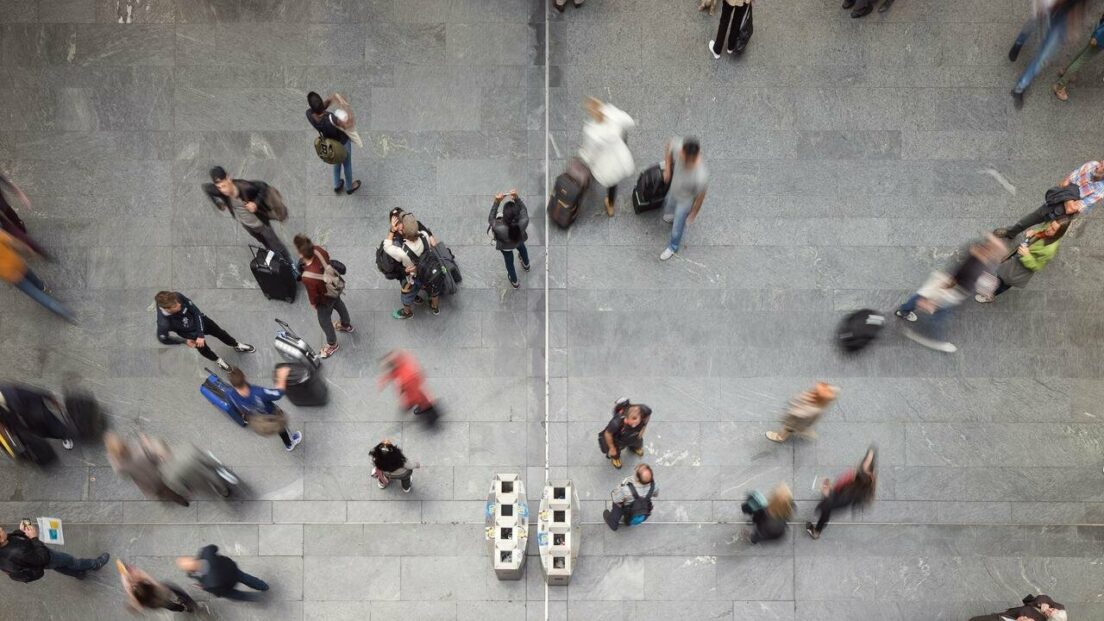“No facial recognition in the stations”

The SBB is looking for suppliers for a new customer frequency measurement system in the stations with a public tender. The media have taken up the topic, and false statements are circulating. Alexis Leuthold, Head of Management at Real Estate, answers the most important questions below.
Why does SBB want to know its customers’ routes in the station?
SBB wants to offer its customers safe and clean stations and the best possible service. This is what SBB employees work for every day, with heart and soul. Knowing the flow of people better helps us to fulfil our mission of guiding customers safely and comfortably through the station.
SBB already measures passenger movements in the station. Why does it want to know more and procure a new system?
Today we measure the number of station users with sensors at the entrance and exit of the station. Now we are evaluating which systems are available that show us and our tenants how individual customer groups behave, i.e. where exactly people pass through, where they stop, where there are accumulations. This is also because the contract with the current provider is expiring. Of course, we are looking for a solution that is state of the art. And this technology has developed rapidly in recent years.
How does this help to improve the service?
We can use the findings to further improve the quality of service and the quality of stay: with safety precautions for critical densities of people, signage along the walkways that is appropriate for the situation, with the intensity of cleaning that is appropriate for the situation, with construction projects for the correct dimming of the facilities if necessary, or even with a service offer that is geared to the flow of people. For example, if we know that 100 customers walk from platform 5 to platform 2 and have 10 minutes to spare, then we can ideally place the regional coffee supplier with croissants there. If we know that there are a lot of prams on a certain route, we can install a lift in the right place. We recognise group formations immediately and the security service can intervene.
Dowe need facial recognition for this additional information, as the media write?
No, precisely not. Because we don’t want to identify the individual persons. That’s why we don’t need facial recognition (for more on facial recognition, see box). We want to know how the subgroups of our customers behave in the station, for example people with prams, passengers with skis or bicycles. To do this, we don’t need to know who the individual people are or what their names are. That is none of our business and is simply irrelevant.
Themedia and experts are asking whether this does not violate fundamental rights.
The discussion shows that this is a sensitive topic, and I understand the concerns. Of course, we strictly adhere to data protection regulations. As I said, it is not about identifying individuals. In the tender documents, we explicitly require that the providers must ensure that they comply with the Data Protection Act and describe how they do so. And that is why we have been in contact with the Federal Data Protection Commissioner (FDPIC) for a long time and will of course comply with all demands before the new system is introduced (for the FDPIC’s current opinion on the SBB’s plan, see box).
And what about the storage of data?
Here too, data protection must be guaranteed in any case. Since we don’t collect any personal data, we don’t store any personal data. The data is stored in a cloud. The cloud infrastructure used must be located in Switzerland or the EU, according to the tender. Which cloud infrastructure will be used will only become clear after the contract has been awarded.
What do we expect in the end, additional revenue?
SBB and all its employees have done a good job when passengers and all visitors feel safe and comfortable in the station and are satisfied with our services or, in the best case, even enthusiastic about them. If the services we offer at the stations meet the needs of the customers, then the turnover is also good.
What you’re saying here sounds very different from what the media have reported so far. Why?
That’s true and it worries me. We failed to explain what we really want after the K-Tipp article was published. The story has taken on a life of its own in the media, false statements are circulating. But we also have to be self-critical: The SIMAP tender was formulated in a very technical way and in some places was simply misleading. We must do better in future. The crucial thing for me is that data protection is simply a given for us as SBB, something we adhere to. Full stop.
SBB does not use facial recognition
Facial recognition refers to a technology that uses biometric data to precisely identify a face or a person. Biometric features are special characteristics of a person’s body that can be assigned unambiguously and with almost 100% certainty to a specific person. For the customer frequency measurement system that SBB wants to use, it does not use facial recognition. It is about recording statistical information, such as gender, age or height, but without allowing conclusions to be drawn about individual persons.
This is what the Federal Data Protection and Information Commissioner (FDPIC) has to say about the tender for the new measurement system
“The SBB informed the FDPIC about this project in October 2022. They assured the FDPIC that the data will not be used in a personal manner and that they will carry out a data protection impact assessment on the project. The FDPIC will continue to supervise the project.”